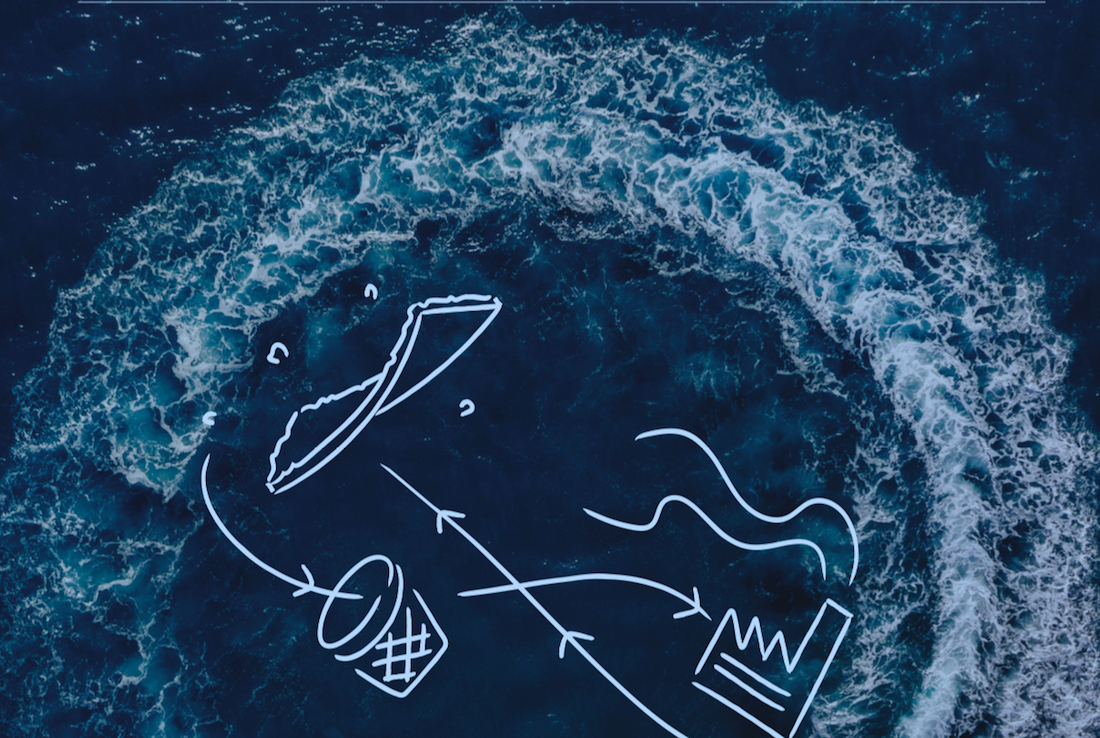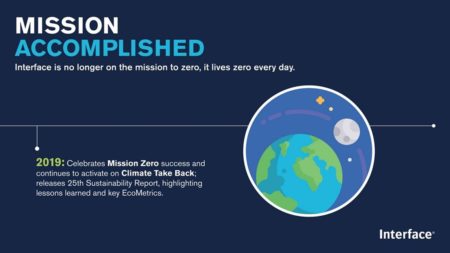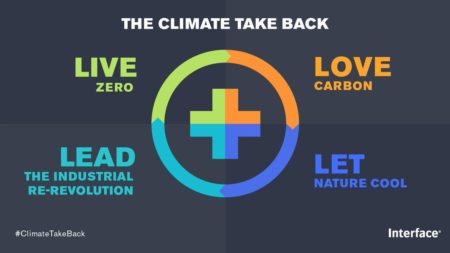
What is your company doing for the climate change? This is the question posed by Interface in presenting the report “Lessons for the Future“ about Mission Zero, the sustainability project started in 1994 and accomplished by the company one year in advance on the plan.
Based on the SHINE Handrprint methodology of the Harvard School for Public Health, Mission Zero has optimized the entire lifecycle of the product and cut off the carbon emissions, allowing the flooring manufacturer to sell all products as carbon neutral, with the usage of 60% recycled materials and 99% of renovable energy.
Furthermore, the “lessons for the future” learnt during Mission Zero has been the benchmark for the next “moon shot”: Climate Take Back, a sustainable chain reaction revolution leaded by a carbon negative company.
“We’ve changed our business to change the world, and we’ve achieved goals we never thought. Mission Zero has taught us important lessons about the future. It’s taught us about business models, moonshot aspirations and solving material challenges with science and imagination. Mission Zero set us up to achieve our next impossible mission: Climate Take Back.”
With these words Erin Meezan, Interface chief sustainability officer, has presented the results of the company’s project started in 1994 by the vision of the founder Ray Anderson and accomplished a year ahead of the scheduled 2020.
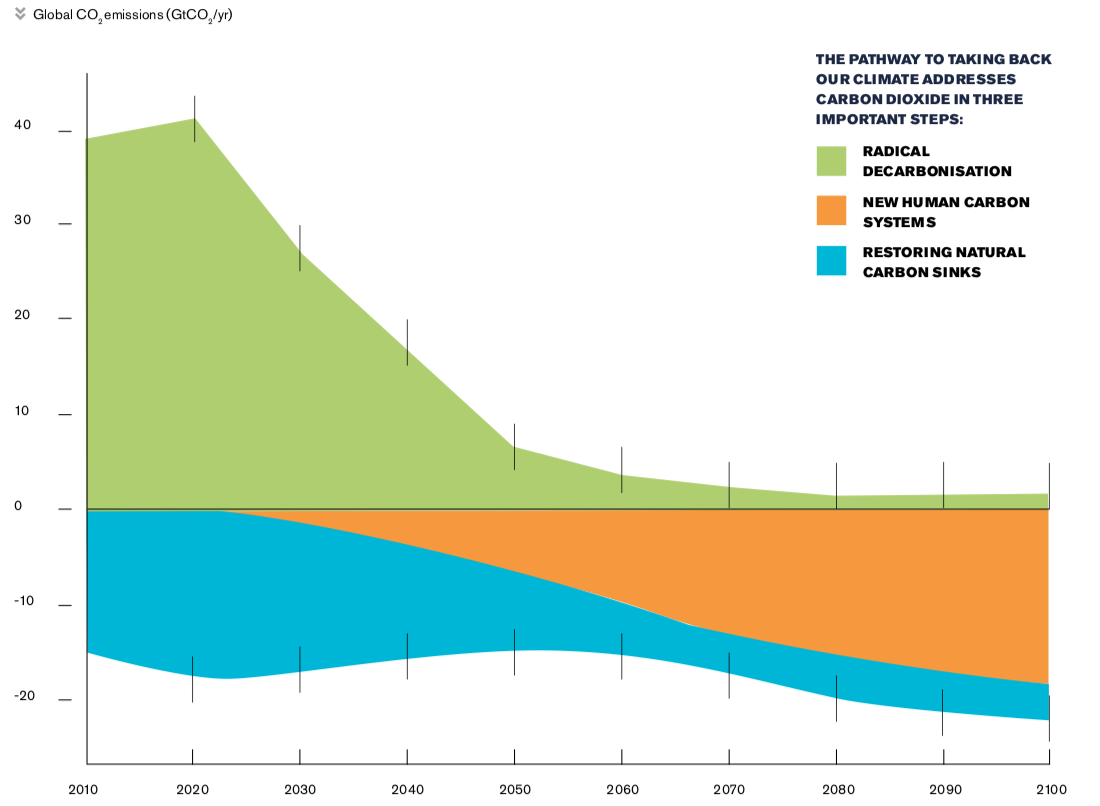
Mission Zero, as reported in the report “Lessons for the future”, was for Interface the pioneer experiment to demonstrate how is it possible to achieve a range of products with zero emissions.
The recipe was to totally restructure the life cycle of the product, from its conception, to the choice and supply of materials, to financing of projects to reduce the impact of greenhouse gases, in order to compensate for the still inevitable deficit in emissions.
However, what has characterized this “Journey to zero” was the attempt to go beyond the company boundaries and to be the fuse for a wider chain reaction, for example, in collaborating with nylon suppliers to create a yarn with recycled components and in fostering a landfill gas reuse project in collaboration with the US city of LaGrange.
In total, the company has calculated the impact of Mission Zero in a manual footprint of 1 million tons of carbon dioxide equivalent.
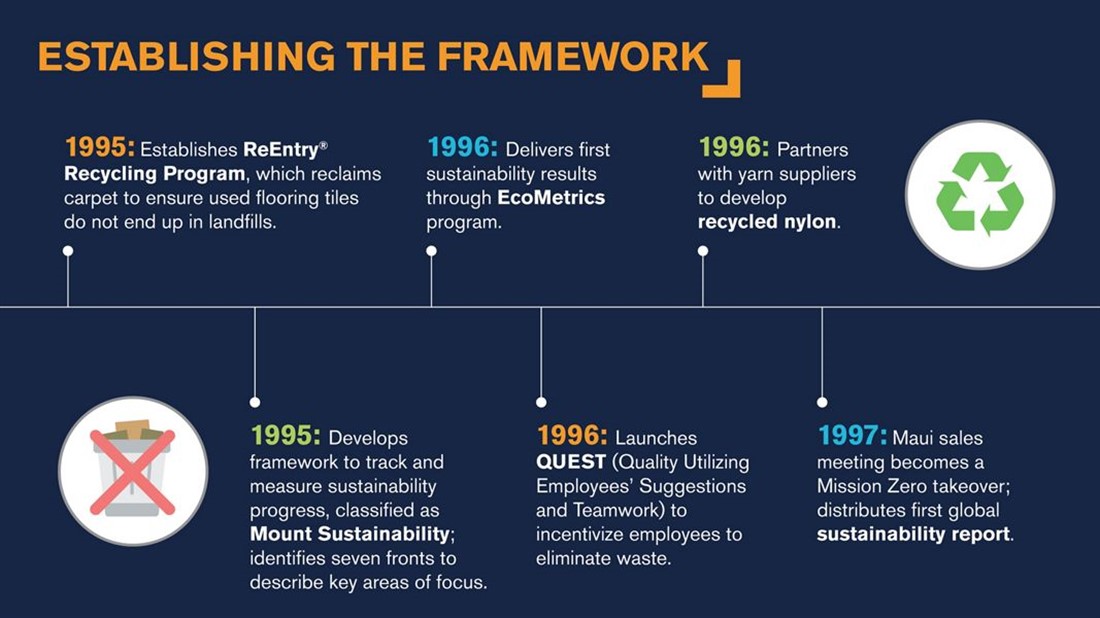
Conceived by the Harvard School for Public Health, the definition of “handprint” overturns the previous one of “ecological footprint”: the definition of handprint, focusing on the possible positive impact of the human presence in the world, change the perspective from thinking about the consumption of natural resources to concentrating on the regenerative capacities of the planet.
An idea strongly promoted in the words by CEO Jay Gould who is now launching the Climate Take Back project, in order to go beyond the zero impact to create a company with a negative impact on the carbon emission by 2040:
“We are excited to show that it is possible to create a product that is actually beneficial to the environment. If we can do it, anyone can do it. And if anyone can do it, everyone should.”
Download the report “Lessons for the Future” here.
Text by Gabriele Masi.
